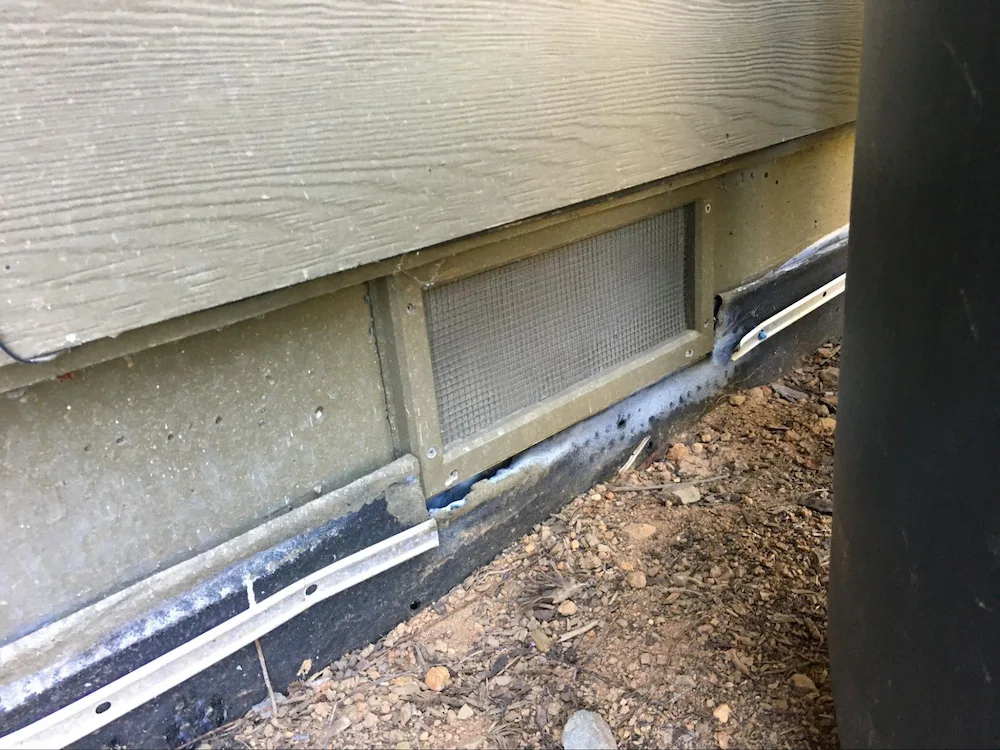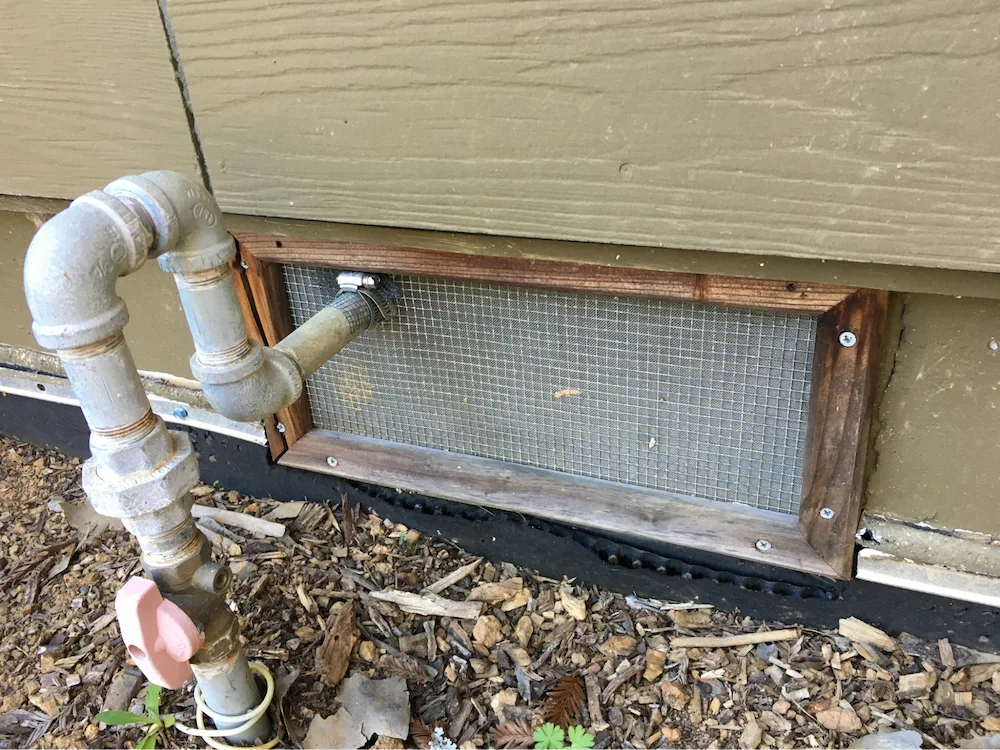Appearance
Crawl Space Vents
Bottom line
Crawl space vents must be protected from ember and flame intrusion by Chapter 7A compliant vents, though metal screens with 1/8 inch or smaller mesh can mitigate against ember exposures.
Overview
Crawl space vents, like attic vents, are vulnerable to ember intrusion and flame exposure, which can ignite unprotected beams, flooring, or other combustible materials stored in crawl spaces. To prevent ember ignitions, metal mesh screens no larger than 1/8th inch are required. Intumescent vents that have a backing material that swells shut when exposed to temperatures above 400deg F to resist fire on an attached deck, nearby vegetation or ground cover, or siding from spreading into the structure.
Vent mesh size
Traditionally, crawl space vent screens were designed to ventilate the area under a structure while preventing critters from taking up residence in them. Most are 1/4 inch, which work well for this purpose, but embers larger than 1/8 inch that are able to pass through a vent contain enough energy to ignite combustible materials, including joists. Crawl space vents must have metal mesh screens with 1/8 inch openings or smaller to protect against wildfire ignitions.
While 1/16 inch screens provide the greatest protection against embers that can ignite a fire, they also restrict the amount of air flow into a given space by __% because the holes in the mesh are smaller. They are also more prone to clogging due to dust and debris, so they may require more maintenance to ensure airflow.
Vent mesh material
In some cases, the screen mesh material may be something other than metal, which will not provide adequate protection against embers because of the likelihood of deformation/melting when exposed to embers or heat during a wildfire. Screens made with metal mesh material are required.
Vent frame material
Similar to the vent mesh material, screen frames should also be noncombustible due to the potential for embers to become lodged in the screen and smolder. While wood-framed vents are not considered to be a significant vulnerability, metal-framed screens are required for new vent installations and replacements.
 Noncombustible framed crawl space vent with 1/4 inch and 1/16 inch layers of metal mesh
Noncombustible framed crawl space vent with 1/4 inch and 1/16 inch layers of metal mesh
 Wood framed crawl space vent with 1/4 inch and 1/16 inch layers of metal mesh where a propane service line enters the crawl space.
Wood framed crawl space vent with 1/4 inch and 1/16 inch layers of metal mesh where a propane service line enters the crawl space.
Intumescent coating present
Intumescent coatings are temperature sensitive materials that swell shut when exposed to heat and are effective at mitigating flame intrusion into structures. Intumescent features on vents protect from flames while screening features protect against ember intrusions. Currently, only vents with an intumescent-coated backing material comply with Chapter 7A wildland urban interface (WUI) building codes. While homes that aren’t in the officially designated WUI aren’t required to have vents rated for ember and flame resistance, Madronus strongly recommends that all vents on a structure be rated for flame resistance.
To assess flame resistant vents, look closely from the exterior at the area just behind the mesh screen to identify a backing material, which will typically have a honeycombed structure. As of September 2022, The only products on the market that are rated for flame resistance are those featured on this list maintained by the CA OSFM, including Vulcan Vents, Embers Out, Brandguard, and O’Hagin.